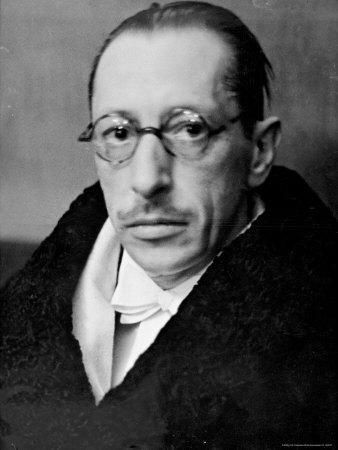

Extended fugues may also be found in this music, reflective of a renewed interest in the contrapuntal techniques of Johann Sebastian Bach’s keyboard music. The distinguishing marks of Beethoven’s “late style” include the many theme-and-variation movements that are found in the Ninth Symphony, in the piano sonatas and string quartets of this era. This is the Beethoven sound with which audiences are most familiar and, symphony-wise, it begins with the length and drama of the “Eroica” Symphony and ends with the Seventh and Eighth Symphonies. An early assimilation of the formal and more technical elements of the Classical style is followed by a gradual individualization of those elements-in effect, the arrival of the composer’s second, middle, or “heroic” period. (Recent scholars have partitioned Beethoven’s music in still more sophisticated ways, but the three-part division works well enough for our purposes). Stravinsky’s neoclassicism of the 1920s, 30s, and 40s seemed a disavowal of the earlier folkloristic idioms, while serialism seemed a contradiction of his neoclassical ideals.Ĭonsider, by way of comparison, the nearly seamless way in which the three stylistic periods follow each other in Ludwig van Beethoven’s music. Each of the three periods-Russian, neoclassical, and serial-seemed to negate (and even to betray) the one that preceded or succeeded it. While the stereotypical three-part division may readily be inferred from his music, the radical nature of the changes accompanying the three divisions or “stylistic periods” was unprecedented. To many critics and listeners at the time, they seemed incomprehensible. Stravinsky and his music are still in vogue, in other words, still very much a part of the contemporary scene.Īt the same time, the twists and turns of his creative path were impulsive and contradictory.

And this early success has proved lasting: to this day, the early ballets, along with other Stravinsky music, is performed in concert halls, opera houses, and ballet theaters the world over. The popular success of these ballet scores, overshadowing that of all other classical music of the past century, brought the composer international stardom at the age of 28.

Fame arrived early with the three ballets- The Firebird (1910), Petrushka (1911), and The Rite of Spring (1913). Stravinsky was certainly the most celebrated composer of the 20th century and possibly the greatest as well, if by “greatest” we mean “deepest,” as in the depth of the feelings or emotions stirred by his music. Would his music survive into the next century and perhaps well beyond that? Looking back, what had been the substance and scale of his influence? Had he been, perhaps, in Western art music, the last of the “great composers”? This piece has been excerpted from Simply Stravinsky by Pieter van den Toorn, part of Simply Charly’s Great Lives series.Īt the time of Stravinsky’s death on April 6, 1971, at the age of 88, the speculation among critics centered quite naturally on his legacy.


 0 kommentar(er)
0 kommentar(er)
